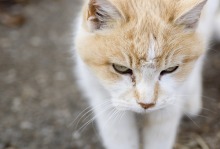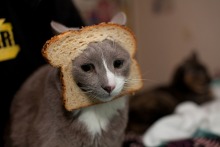Tips on getting your cat to scratch in the right places
You love your feline friend. You even love the many quirky things she does. However, you don’t love the way she scratches your furniture. Yet, you are against having her declawed for many reasons. What do you do?
First, you must understand why cats want to scratch the furniture and everywhere else. No, it isn’t just to sharpen their paws or to help them shed that outer nail layer that they have. They want to scratch to leave their mark and to tell other cats that this is their territory.
Scratching is also an exercise for your cat. It stretches out their shoulder muscles, the tendon of her paws, and the muscles in their forelegs. This is all beneficial to your cat and a reason why she should scratch. However, she needs to learn where to scratch and it is our duty as cat owners to teach her where this place is.
The best way to teach a cat to not scratch our furniture, drapery, etc, is to first begin disciplining her each time we see her scratching these areas. We can do this with a stern no. If she continues to do this after that stern no has been said a time or two we need to take a bit of action.
This can be done by scaring her a little by hitting a newspaper in your hand, while you say no or making a crinkling sound with the newspaper. However, never hit or slap your cat. This is never a necessary action. If the newspaper doesn’t work, you can try spraying her with a tiny bit of water from a spray bottle. While you are working at correcting her bad behavior, you can reinforce some good behavior by giving her an alternative place to scratch.
The alternative place could be a scratching post or pad you purchase at any pet store or the pet section of your local department store. You can even purchase these that are scented with catnip. You could even make your own scratching post. It may take some time to teach your cat not to scratch your furniture, drapery, etc. However, it will be well worth the time and patience that it takes to teach her that this is a not a habit you want her to continue pursuing.







